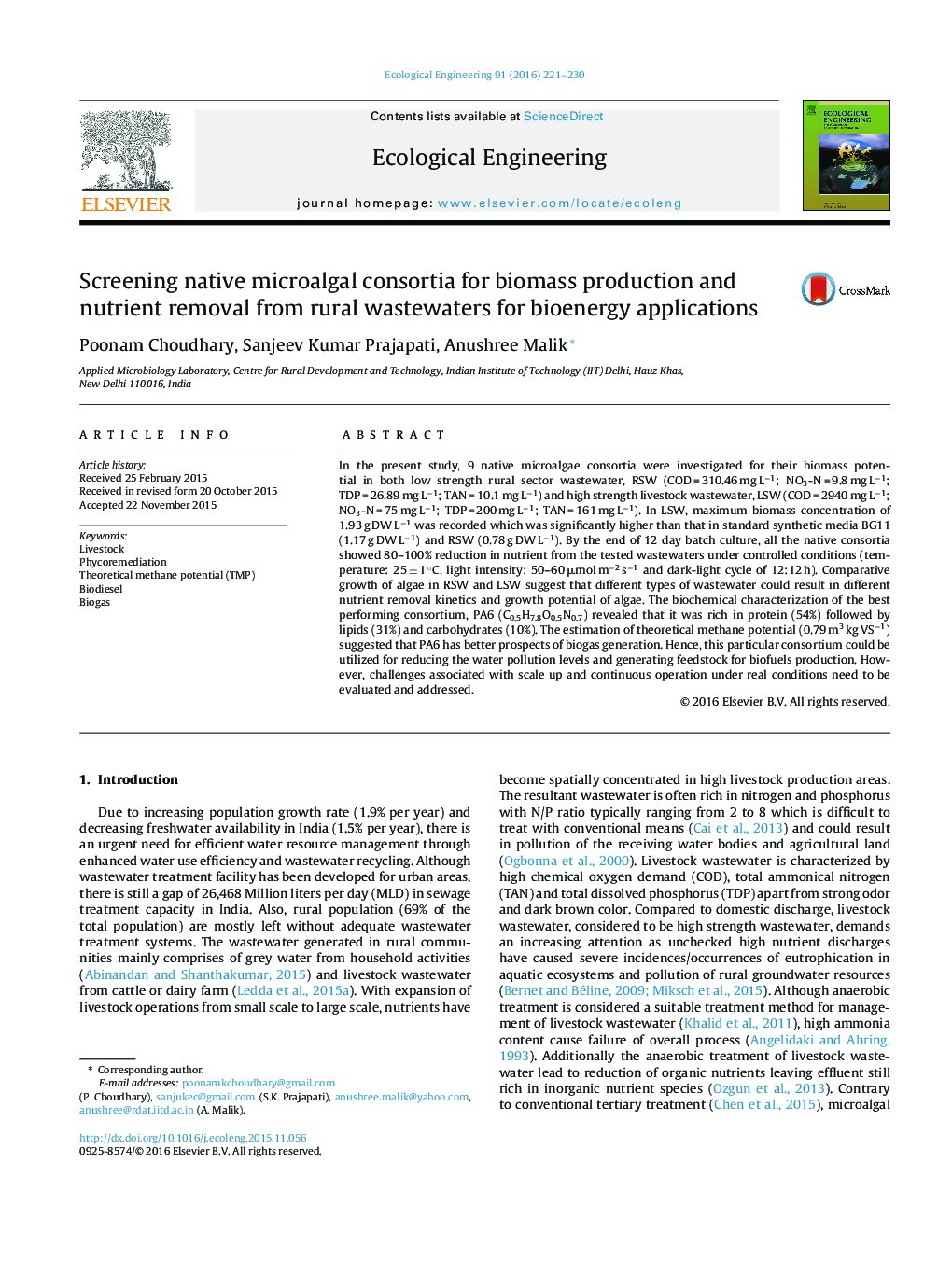| Article ID | Journal | Published Year | Pages | File Type |
|---|---|---|---|---|
| 6301314 | Ecological Engineering | 2016 | 10 Pages |
Abstract
In the present study, 9 native microalgae consortia were investigated for their biomass potential in both low strength rural sector wastewater, RSW (COD = 310.46 mg Lâ1; NO3-N = 9.8 mg Lâ1; TDP = 26.89 mg Lâ1; TAN = 10.1 mg Lâ1) and high strength livestock wastewater, LSW (COD = 2940 mg Lâ1; NO3-N = 75 mg Lâ1; TDP = 200 mg Lâ1; TAN = 161 mg Lâ1). In LSW, maximum biomass concentration of 1.93 g DW Lâ1 was recorded which was significantly higher than that in standard synthetic media BG11 (1.17 g DW Lâ1) and RSW (0.78 g DW Lâ1). By the end of 12 day batch culture, all the native consortia showed 80-100% reduction in nutrient from the tested wastewaters under controlled conditions (temperature: 25 ± 1 °C, light intensity: 50-60 μmol mâ2 sâ1 and dark-light cycle of 12:12 h). Comparative growth of algae in RSW and LSW suggest that different types of wastewater could result in different nutrient removal kinetics and growth potential of algae. The biochemical characterization of the best performing consortium, PA6 (C0.5H7.8O0.5N0.7) revealed that it was rich in protein (54%) followed by lipids (31%) and carbohydrates (10%). The estimation of theoretical methane potential (0.79 m3 kg VSâ1) suggested that PA6 has better prospects of biogas generation. Hence, this particular consortium could be utilized for reducing the water pollution levels and generating feedstock for biofuels production. However, challenges associated with scale up and continuous operation under real conditions need to be evaluated and addressed.
Related Topics
Life Sciences
Agricultural and Biological Sciences
Ecology, Evolution, Behavior and Systematics
Authors
Poonam Choudhary, Sanjeev Kumar Prajapati, Anushree Malik,
